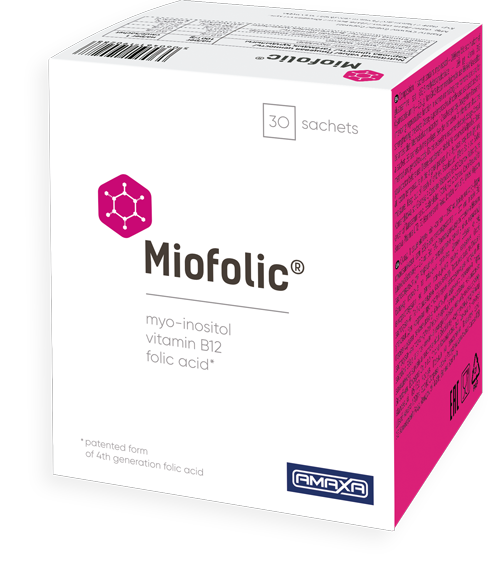Folates, folic acid and 4th generation folate: what is the difference?
Folate (vitamin B9) is an essential nutrient necessary for DNA synthesis. In addition, it is a substrate required for a number of enzymatic reactions that occur during the synthesis of amino acids and the metabolism of vitamins. The need for folates during pregnancy increases because they are required for the fetus growth and development.
Folate deficiency is associated with the development of disorders in both mother (anemia, peripheral neuropathy) and in the fetus (congenital malformations). Folate or vitamin B9 is considered one of the 13 essential vitamins. Folates are not synthesized in the body, they are taken either from food, or through additional intake.
Food folates are nutrients present in natural foods such as green leafy vegetables, legumes, egg yolks, liver and citrus fruits.
Folic acid is a synthetic food supplement that is present in enriched foods and vitamin products.
Folates and folic acid are not metabolically active. They have to turn into an active form – 5-methyltetrahydrofolate to be involved in cellular metabolism.
5-methyltetrahydrofolate is a 4th generation folic acid, which is the dominant form of folate. It circulates in the blood plasma and is involved in biological processes. (1 Miofolic sachet contains 200 μg of the 4th generation folic acid.)
Metabolism of folic acid
Food and most drugs contain a biologically inactive form of folic acid. In the body, it is transformed to the active form of folic acid – 5-methyltetrahydrofolate – under the action of the enzyme methyltetrahydrofolate reductase (MTHFR). It is this active form that is absorbed by the body and further involved in complex biochemical processes.
In Europe, about 30-40% of the population has a genetic mutation (C677T polymorphism), which leads to the inability to absorb folic acid from food or food additives.
That is why the 4th generation folic acid (5-methyltetrahydrofolate) has been synthesized. As such, absorption is not affected by the MTHFR gene mutation, it doesn’t need additional metabolism in the body and bioavailability is high.

(С677Т polymorphism)
4th generation folic acid has a high water solubility. As such, it is absorbed and internalized by the body.
Folic acid is involved in the creation of new cells, including oocytes, and therefore it is especially important for women with polycystic ovary syndrome .
With a sufficient folic acid level, the number of eggs significantly increases, and the homocysteine level in the follicular fluid decreases (frequent miscarriages are associated with the high homocysteine level). During pregnancy preparation, and pregnancy itself, the need for folic acid increases.
Taking folic acid in pregnancy planning reduces the risk of neural tube defects, cleft lip and palate, heart defects, and limbs and urinary tract defects. Folic acid prevents impaired fetal growth and reduces the baby’s risk of being underweight.
Folic acid requirement for adults is 400 µg per day.
In order to get the necessary amount of folic acid, it is necessary to take it in the form of a biologically active form, which is immediately absorbed by the body and does not need additional metabolism. 4th generation folic acid is the biologically active form and it is contained in the Miofolic complex. The recommended Miofolic intake to get a daily dose (400 µg) is 2 sachets per day.

